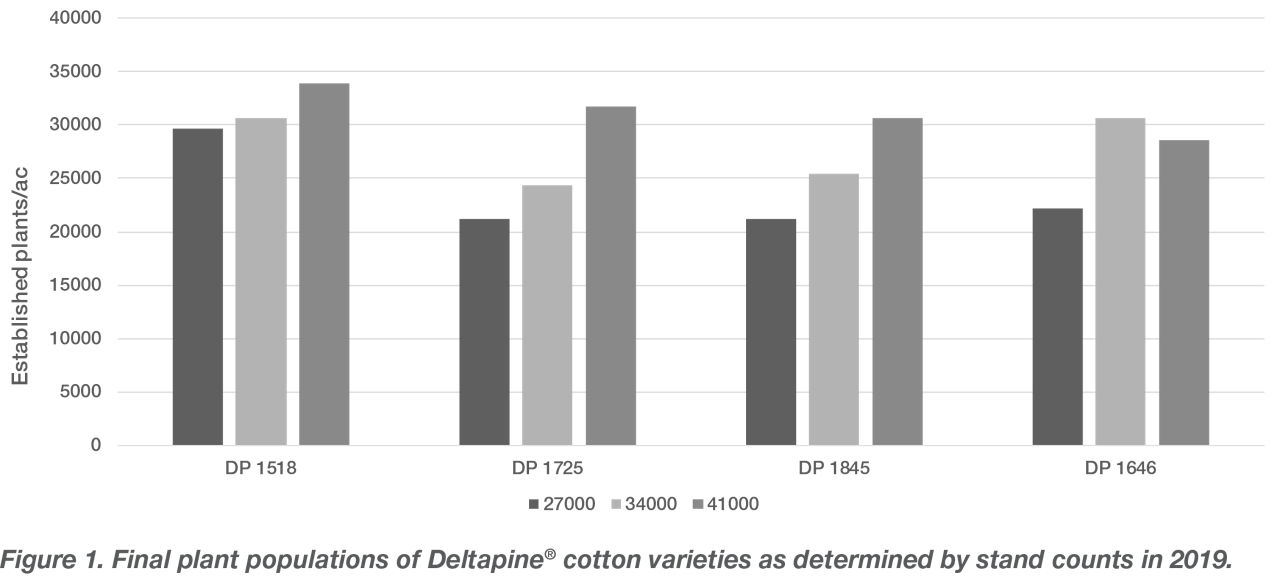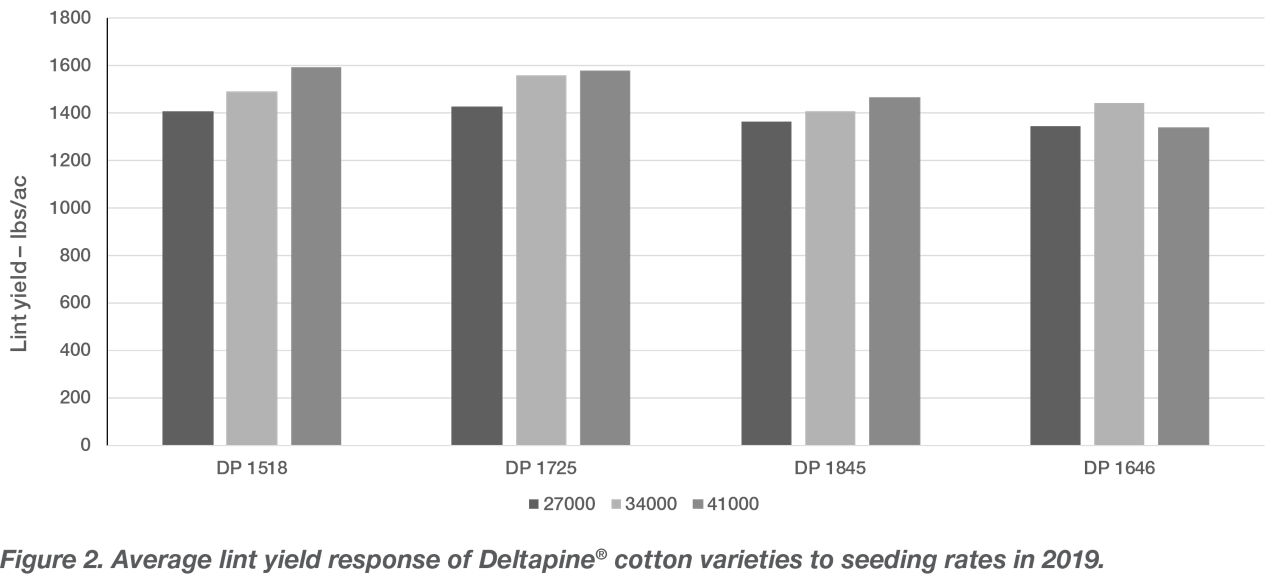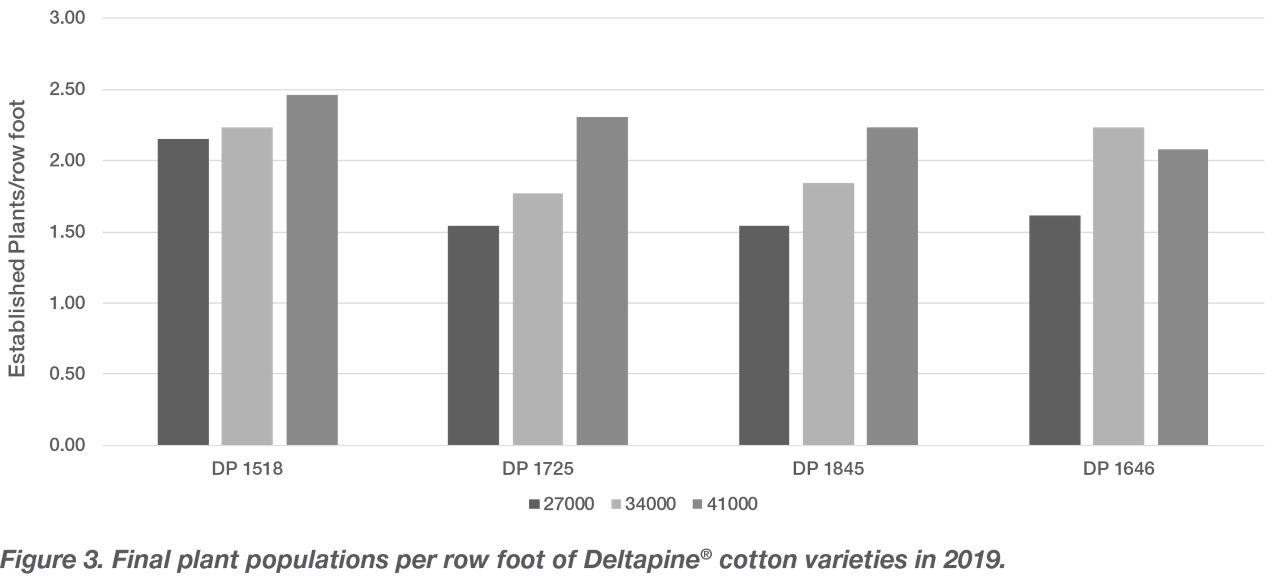5 MIN READ
Response of Deltapine® Cotton Varieties to Seeding Rate
February 7, 2020
To compare yearly research data, click on a tab.
Response of Deltapine Cotton Varieties to Seeding Rate - 2019
TRIAL OBJECTIVE
Population density plays a central role in optimizing the productivity, management, and economic return of cotton. Seeding rates of cotton can range from 24,000 to 45,000 seeds/acre depending on field and environmental conditions. The optimal seeding rate and plant population varies from field to field and is dependent on many factors.
A cotton demonstration trial was conducted at the Bayer Learning Center at Scott, Mississippi to determine the effect of seeding rate on the yield potential of four Deltapine® cotton varieties.
RESEARCH SITE DETAILS
| Location | Scott, MS |
| Soil Type | Commerce silt Loam |
| Previous Crop |
Corn |
| Tillage Type |
Conventional |
| Planting Date | 5/30/19 |
| Harvest Date | 9/09/19 |
| Potential Yield (bu/acre) |
1600 |
| Seeding Rate (seeds/acre) |
27K,34K,41K |
Four Deltapine cotton varieties (DP 1518 B2XF, DP 1725 B2XF, DP 1845 B3XF, and DP 1646 B2XF) were planted at three seeding rates: 27,000, 34,000, and 41,000 seeds/acre.
All agronomic inputs including plant growth regulator (PGR) applications were applied per local standards.
85 lb of actual nitrogen was applied as 32% liquid UAN. Phosphorus and potassium were applied per soil test recommendations for replacement of 2018 crop removal.
PGR management was consistent across all treatments and was not an interacting factor in 2019.
Strip plots were 12 rows x 1100 feet long with a total plot area of about 1 acre/plot.
Final plant population was determined by stand counts of 1/1000 of an acre from each plot after emergence.
- The center 6 rows from each plot were harvested for yield.
UNDERSTANDING THE RESULTS

- Averaged across the cotton varieties and seeding rates, final plant populations in this study were approximately 80% of the seeding rates (Figure 1).

- Higher than average yields were observed in 2019 at the Bayer Learning Center at Scott, Mississippi. When averaged across all treatments, average yield was 1450 lb lint/acre (Figure 2).

Yields in this trial in 2019 indicate a positive response to higher seeding rates, particularly in the range between 34,000 and 41,000 seeds/acre versus the lower rate of 27,000 seeds/acre (Figure 2). In this study, the 34,000 and 41,000 seeds/acre seeding rates resulted in an established plant population between 2 and 2.25 plants/foot when averaged across all four products (Figure 3). This aligns with university recommendations for optimal yield potential.1
KEY LEARNINGS
Seeding rate should be a central planning decision in all cotton production systems. Cotton producers should be aware of the likelihood of reduced yield potential if final plant stands are reduced to levels below 2 plants/foot.1
This demonstration indicated a positive yield response to higher seeding rates.
All factors including rotation practices, cotton variety planted, fertility levels, irrigation capability, PGR intent, and management style should be equally considered when making seeding rate decisions in cotton.
Sources:
1 Collins, G. August 19, 2015. Seeding rates and plant populations (Collins and Edmisten). North Carolina State Extension. http://cotton.ces.ncsu.edu.
3014_R2